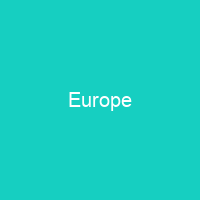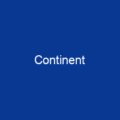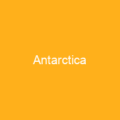Europe

Europe is a continent located entirely in the Northern Hemisphere and mostly in the Eastern Hemisphere. It comprises the westernmost part of Eurasia and is bordered by the Arctic Ocean, the Atlantic Ocean and the Mediterranean Sea. Politically, Europe is divided into about fifty sovereign states, of which Russia is the largest and most populous. Europe had a total population of about 741 million as of 2018.
About Europe in brief
 Europe is a continent located entirely in the Northern Hemisphere and mostly in the Eastern Hemisphere. It comprises the westernmost part of Eurasia and is bordered by the Arctic Ocean, the Atlantic Ocean and the Mediterranean Sea. Europe covers about 10,180,000 km2, or 2% of the Earth’s surface, making it the second smallest continent. Politically, Europe is divided into about fifty sovereign states, of which Russia is the largest and most populous. Europe had a total population of about 741 million as of 2018. The European climate is largely affected by warm Atlantic currents that temper winters and summers on much of the continent. During the Cold War, Europe was divided along the Iron Curtain between NATO in the West and the Warsaw Pact in the East. The EU originated in Western Europe but has been expanding eastward since the fall of the Soviet Union in 1991. The currency of most countries of the European Union, the euro, is the most commonly used among Europeans; and the EU’s Schengen Area abolishes border and immigration controls between most of its member states and some non-members states. In classical Greek mythology, Europa was a Phoenician princess. One view is that her name derives from the ancient Greek elements εὐρύς, “wide, broad” and “eye, face, countenance”, hence their composite Eurṓpē would mean “wide-gazing” or “broad of aspect” European culture is the root of Western civilization, which traces its lineage back to ancient Greece and ancient Rome.
Europe is a continent located entirely in the Northern Hemisphere and mostly in the Eastern Hemisphere. It comprises the westernmost part of Eurasia and is bordered by the Arctic Ocean, the Atlantic Ocean and the Mediterranean Sea. Europe covers about 10,180,000 km2, or 2% of the Earth’s surface, making it the second smallest continent. Politically, Europe is divided into about fifty sovereign states, of which Russia is the largest and most populous. Europe had a total population of about 741 million as of 2018. The European climate is largely affected by warm Atlantic currents that temper winters and summers on much of the continent. During the Cold War, Europe was divided along the Iron Curtain between NATO in the West and the Warsaw Pact in the East. The EU originated in Western Europe but has been expanding eastward since the fall of the Soviet Union in 1991. The currency of most countries of the European Union, the euro, is the most commonly used among Europeans; and the EU’s Schengen Area abolishes border and immigration controls between most of its member states and some non-members states. In classical Greek mythology, Europa was a Phoenician princess. One view is that her name derives from the ancient Greek elements εὐρύς, “wide, broad” and “eye, face, countenance”, hence their composite Eurṓpē would mean “wide-gazing” or “broad of aspect” European culture is the root of Western civilization, which traces its lineage back to ancient Greece and ancient Rome.
European powers colonized at various times the Americas, almost all of Africa and Oceania, and the majority of Asia. Both world wars took place for the most part in Europe, contributing to a decline in Western European dominance in world affairs by the mid-20th century as the Soviet Soviet Union and the United States took prominence. There exists a political movement favoring the evolution of the EU into a single federation encompassing much of Europe. There has been attempts to connect Eurpē to a Semitic word like “erebu” meaning “to go down, to set down, which is at the origin of Arabic Maghreb and Hebrew ma’arav’ or “evening” Michael A. Barry finds the mention of the word Ereb on an Assyrian stele with the opposition of sunrise to sunset in opposition to the word erebu, meaning ‘evening’ or ‘to set down’ in ancient Assyrian. The name Europa has been located on the toponyms toponyms of ancient Greece, Macedonia, Egypt, and Turkey for more than 2,000 years. It is also the name of a toponym in the toponym of the territory of ancient Macedonia, “Erebu”, which means “west” in ancient Greek and “ereb” means “to set” in Arabic, meaning “even after sunset” or the opposition to sunrise, “even” in Hebrew.
You want to know more about Europe?
This page is based on the article Europe published in Wikipedia (as of Dec. 17, 2020) and was automatically summarized using artificial intelligence.












